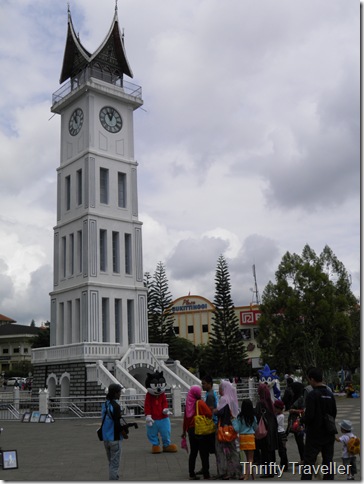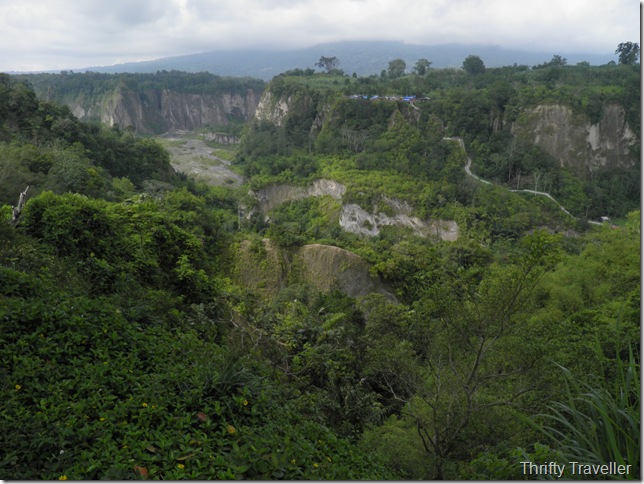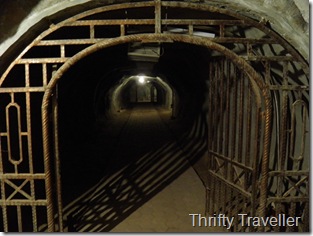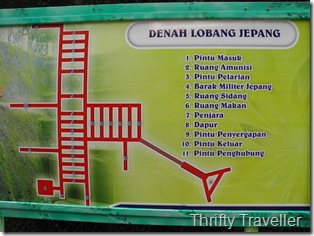Bukittinggi is a hill station town about 90km from Padang (two and a half hours drive). It lies just south of the equator at an altitude of less than 4,000 feet making the day time temperature comfortable and the nights cool. I hired a car and driver to take me there.
The town was established by the Dutch around a fortress, Fort de Kock, built in 1825 to withstand attacks from local rebels. A modern concrete observation tower occupies the hilltop where the fort once stood. The earthen ramparts and a few old cannons are still in evidence.

There are nice views of the surrounding area from the hill top and on a clear day two nearby volcanoes, Mt. Marapi and Mt. Singgalang can be seen (unfortunately obscured by clouds during my quick trip).
An unusually designed bridge (Jambatan Limpapen) takes pedestrians from Fort de Kock to the Bukittinggi Zoo, which I’ll write about in a future post.
The town’s most famous landmark is Jam Gadang, a rather attractive clock tower which was built by the Dutch in 1926 but remodelled after Independence by the addition of a Minangkabau style roof.
Just a few minutes walk from here is an impressive natural feature, the Sianok Canyon, which is part of a rift valley running the entire length of Sumatra, marking the fault line which is the cause of much of the seismic activity on the island.
The path on the right of the photo is bordered by a crenelated wall known as the Great Wall of Bukittinggi and visitors can trek down to the floor of the canyon.
During WWII Bukittinggi was the headquarters of the Japanese 25th Army. They built an extensive network of tunnels and underground stores which are now open to the public and known as Lobang Jepang.
Bukittinggi is an interesting town and it was a worthwhile trip with pleasant scenery along the way.











